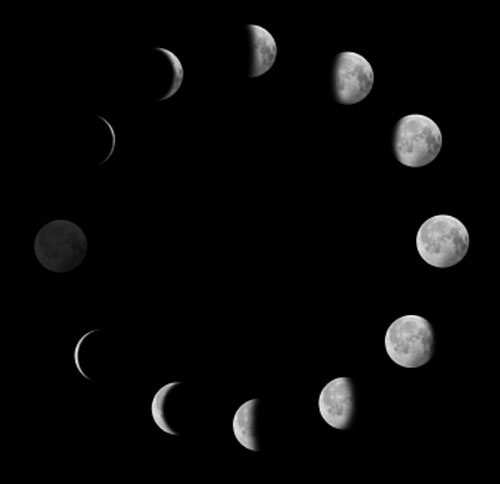Is earthquake activity related to the Moon or Sun?
This has been a subject of great debate for many years.
Most evidence suggests that earthquakes are caused by stress changes resulting from deformation due to motion of the Earth's lithospheric plates.
However, the gravitational pull of the moon and sun does also induce elastic deformation of the solid Earth similar to ocean tides. This type of deformation is reversible. Once the forces are no longer applied, the object returns to its original shape. These 'Earth tides' have both diurnal (12-hour) and fortnightly (14-day) periods.
Additionally, ocean tides load and unload the Earth's crust as sea level changes. Expected stresses resulting from Earth tides (~4 kPa) are rather less than from tectonic plate motions.
The idea that Earth tides may influence earthquake activity has been around for over 100 years, but despite this a link between increases in earthquake activity and tidal maxima has not been clearly demonstrated.
Are there correlations between Earth tides and earthquake occurrence?
Several studies have reported no correlation between the Earth tide and earthquake occurrence, e.g. Kennedy et al., 2004.
Other studies have reported small positive correlations, e.g. Kasahara, 2002.
Earthquakes occur when the stress on a fault exceeds a critical threshold for fault rupture. It is well known that applying additional stress to a fault system that is close to failure may initiate rupture and produce an earthquake (the straw that breaks the camel's back).
It is possible that uplift resulting from Earth tides could reduce the normal stresses that hold faults together. Some recent research by Metivier et al. (2009) presents evidence for this.
However, even if there is a statistical relationship between Earth tides and earthquake activity, it doesn't really help in terms of earthquake prediction, since we have no way of measuring which faults are close to failure.
In terms of the supermoon theory, the moon's gravitational pull at lunar perigee is not different enough from its pull at other times to significantly change the height of the tides and thus the likelihood of earthquakes.
Further reading
Cochran et al. 2004. Earth Tides Can Trigger Shallow Thrust Fault Earthquakes, Science, 306, 5699, 1164–1166.
Kasahara. 2002. Tides, Earthquakes, and Volcanoes, Science 297, 348
Kennedy et al. 2004. Earthquakes and the Moon: Syzygy Predictions Fail the Test, Seismological Research Letters, 75, 5
Metivier et al. 2009. Evidence of earthquake triggering by the solid earth tides, Earth and Planetary Science Letters 278 (2009) 370–375
Tanaka. 2010. Tidal triggering of earthquakes precursory to the recent Sumatra megathrust earthquakes of 26 December 2004 (Mw 9.0), 28 March 2005 (Mw 8.6), and 12 September 2007 (Mw 8.5), Geophysical Research Letters, 37, L02301
Contact
Contact Brian Baptie for further information.

- A Comparison of the Folkestone and Market Rasen Earthquakes
- Revised Seismic Hazard Maps for the UK
- Seismogenesis and State of Stress in the UK
- Monitoring Volcanic Eruptions Using Interferometry
- Particular events
- Are yesterday's earthquakes tomorrow's disasters?
- Creating 'virtual seismometers' deep inside the Earth
- Fault line living
- Is earthquake activity related to the Moon or Sun?
- Is earthquake activity increasing?


